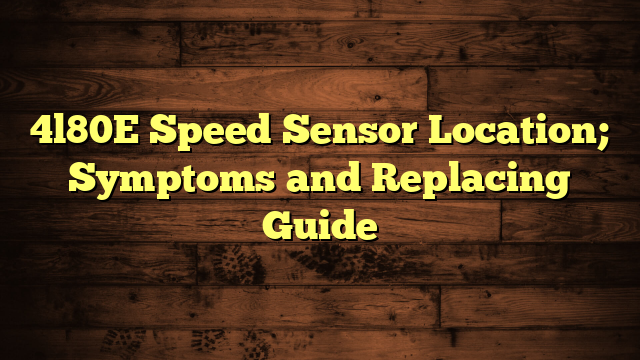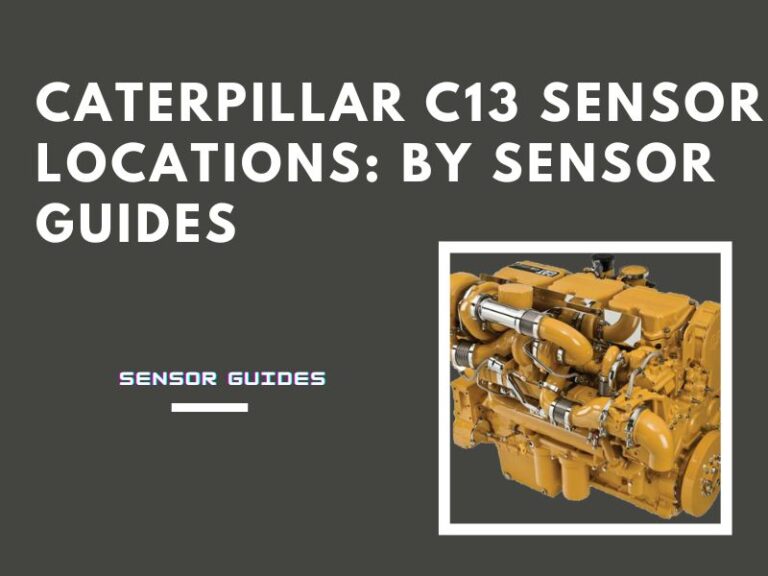C0062, Longitudinal Acceleration Sensor Location: Maximizing Vehicle Dynamics and Safety
The Longitudinal Acceleration Sensor (LAS) plays a pivotal role in modern automotive systems, enhancing both vehicle dynamics and safety. The precise location of this sensor within a vehicle is crucial for its accurate functioning and overall effectiveness. In this article, we will delve into the significance of the LAS and explore the various factors influencing its placement.
Understanding the principles behind sensor positioning can optimize vehicle performance and ensure passenger safety.
Table of Contents
What is C0062 code, and how to deal with it?
The C0062 code is a generic diagnostic trouble code (DTC) that typically indicates a problem with the longitudinal acceleration sensor or related systems. However, it’s important to note that DTCs can have varying definitions and specific meanings depending on the vehicle’s make, model, and year. Therefore, it’s crucial to consult the vehicle’s specific service manual or diagnostic tool for accurate information related to the C0062 code.
In general, the C0062 code suggests an issue with the longitudinal acceleration sensor circuit, such as a malfunction, wiring problem, or sensor failure. When triggered, this code often indicates that the sensor’s signal is out of range, inconsistent, or not functioning as expected.
When encountering the C0062 code, here are some general steps to consider:
- Retrieve the code: Use a compatible OBD-II scanner or diagnostic tool to retrieve the specific code, including any associated freeze frame data. This information will help in diagnosing the problem.
- Inspect the sensor and wiring: Visually inspect the longitudinal acceleration sensor and its wiring harness for any signs of damage, loose connections, or corrosion. Ensure that the sensor is securely mounted and properly connected.
- Clear the code: After the initial inspection, clear the DTC and see if it returns. Sometimes, a temporary issue or intermittent fault can trigger the code. It might have been a momentary glitch if the code did not reappear.
- Conduct further diagnostics: If the code persists, more in-depth diagnostics are necessary. This may involve using advanced diagnostic tools, such as oscilloscopes or multimeters, to test the sensor’s output, check for voltage or resistance irregularities, and evaluate the sensor’s performance under different driving conditions.
- Consult service manual and technical resources: Refer to the vehicle’s specific service manual or consult technical resources that provide detailed troubleshooting procedures for the C0062 code. These resources will provide manufacturer-specific diagnostic steps, wiring diagrams, and potential causes for the code.
- Repair or replace faulty components: Based on the diagnostic findings, repair or replace any faulty components, such as the longitudinal acceleration sensor, damaged wiring, or connectors. Follow the manufacturer’s recommended repair procedures and ensure that all repairs are performed accurately.
- Clear codes and verify repairs: Once the repairs are completed, clear the DTCs and perform a final verification test to ensure that the C0062 code no longer reappears. This may involve driving the vehicle under specified conditions or using a diagnostic tool to check for any remaining fault codes.
It’s important to note that the steps provided are general guidelines, and the specific diagnostic and repair procedures can vary depending on the vehicle’s make, model, and year. Therefore, referring to the appropriate service manual or seeking assistance from a qualified technician is recommended for accurate diagnosis and repair of the C0062 code.
Honda C0062-F0: How to deal with it?
Honda C0062-F0 is a diagnostic trouble code (DTC) that indicates a problem with the longitudinal acceleration sensor (LAS) on a Honda vehicle. The LAS is a sensor that measures the acceleration of the vehicle in the longitudinal direction, i.e., forward and backward.
The LAS is used by the vehicle’s electronic control unit (ECU) to control a number of functions, including:
- Traction control
- Stability control
- Anti-lock braking system (ABS)
When the LAS fails, the ECU will set the C0062-F0 DTC and the traction control, stability control, and ABS systems may be disabled. This can cause the vehicle to feel unstable and may lead to accidents.
The most common cause of the C0062-F0 DTC is a faulty LAS sensor. Other possible causes include:
- A wiring problem
- A software problem
If you are getting the C0062-F0 DTC, it is important to have the vehicle diagnosed by a qualified mechanic. They will be able to determine the cause of the code and recommend the necessary repairs.
Here are some additional symptoms that may be associated with the C0062-F0 DTC:
- The traction control, stability control, and ABS lights may be illuminated on the dashboard.
- The vehicle may feel unstable when driving.
- The vehicle may pull to one side when braking.
If you are experiencing any of these symptoms, having the vehicle diagnosed by a qualified mechanic as soon as possible is important.
What is Longitudinal Acceleration?
Longitudinal acceleration refers to the rate of change of a vehicle’s velocity in the forward or backward direction. It measures how quickly a vehicle can increase or decrease its speed. The LAS is designed to detect these longitudinal acceleration forces and provide valuable data to various vehicle systems, including stability control, traction control, and anti-lock braking.
The relationship between longitudinal acceleration and vehicle dynamics is intricate. Accurate acceleration measurement allows the vehicle’s control systems to respond promptly and precisely, ensuring optimal traction, stability, and maneuverability. It serves as a critical input for safety systems, helping to prevent skidding, loss of control, and potential accidents.
What are the Factors Influencing Sensor Placement?
Several factors come into play when determining the ideal location for the longitudinal acceleration sensor. These factors include the vehicle type and design, the technology employed in the sensor, and the integration with Electronic Stability Control (ESC) systems.
A. Vehicle Type and Design
Different vehicle types like sedans, SUVs, and sports cars have unique weight distributions and mechanical characteristics. These variations impact the ideal location of the LAS.
For instance, placing the sensor closer to the front end in a front-engine, rear-wheel-drive vehicle provides better sensitivity to acceleration changes. On the other hand, in a rear-engine vehicle, the sensor’s placement might be more effective near the rear axle.
B. Sensor Technology and Accuracy
Sensor technology advancements have improved accuracy and reliability in detecting longitudinal acceleration. The choice of sensor type and quality influences its optimal location.
High-performance sensors are often strategically placed to minimize noise and vibration interference, ensuring precise measurement of acceleration forces.
C. Impact of Electronic Stability Control (ESC) Systems
ESC systems play a crucial role in enhancing vehicle stability by monitoring and adjusting individual wheel speeds during dynamic maneuvers. The LAS provides valuable input to these systems, allowing them to intervene when necessary. Hence, sensor placement should consider its compatibility and seamless integration with ESC systems for optimal performance.
Where does the Longitudinal acceleration sensor is located?
In general, the longitudinal acceleration sensor is commonly located in the front-end, rear-end, or near the vehicle’s center of gravity. These are the typical areas where the sensor can effectively detect and measure longitudinal acceleration forces.
While specific vehicle models and manufacturers may have unique sensor placement strategies, there are several common locations where longitudinal acceleration sensors are typically installed. These include:
A. Front-End Placement:
Many vehicles feature sensor placement in the front end, near the engine compartment. This location allows for efficient detection of longitudinal acceleration changes, especially in front-engine vehicles. Placing the sensor closer to the source of acceleration improves response time and accuracy.
B. Rear-End Placement:
Sensor placement near the rear end may be preferred in certain vehicle configurations, such as rear-engine or mid-engine designs. This location ensures accurate measurement of longitudinal acceleration forces originating from the rear axle.
C. Center-of-Gravity Placement:
Some vehicles may employ a center-of-gravity sensor placement strategy. This involves positioning the LAS at a point that represents the vehicle’s average longitudinal acceleration. A more balanced measurement of acceleration forces can be achieved by placing the sensor closer to the center of the vehicle.
What happens when the longitudinal accelerator sensor goes bad?
When a longitudinal acceleration sensor goes bad or fails, it can have several implications on the vehicle’s performance and safety systems. Here are some potential consequences:
01. Impaired Stability Control
The longitudinal acceleration sensor is an integral part of the electronic stability control (ESC) system. If the sensor malfunctions, the ESC system may not receive accurate data about the vehicle’s acceleration, leading to impaired stability control.
This can result in reduced traction, compromised handling, and an increased risk of skidding or loss of control.
02. Traction Control Issues
A faulty longitudinal acceleration sensor can also affect the vehicle’s traction control system. The sensor provides vital information about the vehicle’s acceleration changes, allowing the system to optimize power delivery and braking to maintain traction.
A malfunctioning sensor may lead to improper modulation of power and braking, resulting in reduced traction and compromised performance.
03. Anti-lock Braking System (ABS) Problems
The ABS relies on accurate data from various sensors, including the longitudinal acceleration sensor, to detect wheel lock-up during braking.
If the sensor fails, it may not provide the necessary information for the ABS to function properly. This can impact the system’s ability to prevent wheel lock-up and maintain control during emergency braking situations.
04. Safety System Limitations
Modern vehicles rely on longitudinal acceleration data for various safety systems, such as collision avoidance, adaptive cruise control, and pre-crash sensing.
A defective sensor can affect the performance of these systems, potentially compromising their ability to detect and respond to potential hazards accurately.
05. Diagnostic Trouble Codes (DTCs)
When a longitudinal acceleration sensor fails, it is likely to trigger diagnostic trouble codes (DTCs) in the vehicle’s onboard diagnostic system.
These codes can be retrieved using a diagnostic scanner, allowing technicians to identify and diagnose the specific issue with the sensor.
In summary, a malfunctioning or faulty longitudinal acceleration sensor can lead to impaired stability control, compromised traction control, ABS issues, limitations in safety systems, and trigger diagnostic trouble codes. It is crucial to address sensor failures promptly through professional diagnosis and repair to ensure optimal vehicle performance and safety.
How to calibrate a Longitudinal acceleration sensor?
Step-by-step guide for longitudinal acceleration sensor calibration:
Step 01 – Gather the necessary tools and equipment
To perform the calibration, you will need a diagnostic scanner compatible with your vehicle’s make and model, a stable and level surface for testing, and any additional tools specified by the manufacturer.
Step 02 – Consult the vehicle’s service manual
Refer to the vehicle’s service manual or manufacturer’s documentation for specific instructions and recommended longitudinal acceleration sensor calibration procedures. This information will provide detailed steps and any unique considerations for your particular vehicle.
Step 03 – Ensure safety precautions
Park the vehicle in a safe and level area, engage the parking brake, and follow any additional safety precautions outlined in the vehicle’s manual.
Connect the diagnostic scanner: Locate the vehicle’s onboard diagnostic (OBD) port, usually located under the dashboard, and connect the diagnostic scanner. Power on the scanner and connect with the vehicle’s onboard computer.
Step 04 – Access the calibration menu: Use the diagnostic scanner to navigate to the calibration menu or relevant sensor calibration section. This will vary depending on the specific scanner and vehicle model.
Step 05 – Follow on-screen prompts
The diagnostic scanner will guide you through calibration, providing step-by-step instructions and prompts. Pay close attention to any specific instructions regarding sensor placement, initialization, or test conditions.
Step 06 – Enter reference values
If required, input the reference acceleration values provided in the service manual or by the manufacturer. These values will serve as a baseline for comparison during the calibration process.
Step 07 – Perform calibration maneuvers
Follow the instructions on the scanner to perform the specified calibration maneuvers. These maneuvers typically involve controlled acceleration and deceleration, ensuring the sensor accurately measures the corresponding acceleration forces.
Step 08 – Monitor the sensor readings
While performing the calibration maneuvers, monitor the diagnostic scanner’s display to ensure the sensor readings align with the expected values. Take note of any discrepancies or abnormal readings.
Step 09 – Finalize calibration
Following the calibration maneuvers, follow the scanner’s prompts to finalize the calibration process. This may involve confirming the calibration results, saving the changes, or exiting the calibration menu.
Step 10 – Perform verification test
After calibration, it is advisable to perform a verification test to ensure the sensor’s accuracy and reliability. This may involve driving the vehicle under controlled conditions or using a specialized testing device to validate the sensor’s measurements.
Step 11 – Record calibration details
Maintain a record of the calibration details, including the date, sensor readings before and after calibration, and any additional notes or observations.
It is important to note that the specific steps and procedures may vary depending on the vehicle manufacturer, sensor technology, and diagnostic equipment used. Always refer to the manufacturer’s documentation and follow the recommended procedures for your specific vehicle to ensure accurate calibration of the longitudinal acceleration sensor. If unsure, it is advisable to seek professional assistance from qualified technicians.
Conclusion
The location of the longitudinal acceleration sensor within a vehicle plays a crucial role in maximizing vehicle dynamics and safety. By understanding the factors influencing sensor placement, manufacturers can optimize the performance of stability control systems, traction control systems, and anti-lock braking systems. Careful consideration of vehicle type, sensor technology, and integration with ESC systems ensures accurate and reliable measurements of longitudinal acceleration forces. With the continued advancement of automotive technology, the precise positioning of the LAS will continue to evolve, leading to enhanced vehicle performance, improved safety, and an exhilarating driving experience.





